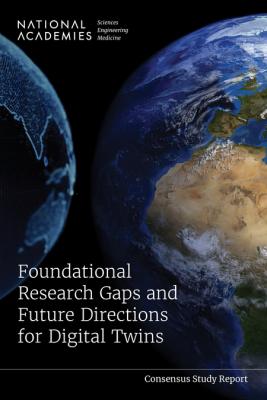Report on Digital Twins
The highly anticipated report from a series of Workshops on Digital Twins was recently published and is available to everyone. The workshops were organized in 2023 by an ad hoc committee appointed by the National Academies of Sciences, Engineering, and Medicine (NASEM) to identify needs and opportunities to advance the mathematical, statistical, and computational foundations of digital twins in applications across science, medicine, engineering, and society.
Reference
- National Academies of Sciences, Engineering, and Medicine. 2023. Foundational Research Gaps and Future Directions for Digital Twins. Washington, DC: The National Academies Press. NFoundational Reseach Gaps and Future Directions for Digital Twins
A digital twin couples computational models with a physical counterpart to create a system that is dynamically updated through bidirectional data flows as conditions change. Going beyond traditional simulation and modeling, digital twins could enable improved medical decision-making at the individual patient level, predictions of future weather and climate conditions over longer timescales, and safer, more efficient engineering processes. However, many challenges remain before these applications can be realized.
The report proposes the following definition of a digital twin: A digital twin is a set of virtual information constructs that mimics the structure, context, and behavior of a natural, engineered, or social system (or system-of-systems); is dynamically updated with data from its physical twin; has a predictive capability; and informs decisions that realize value. The bidirectional interaction between the virtual and the physical is central to the digital twin.
A digital twin is more than just simulation and modeling. The report emphasizes that a digital twin goes beyond simulation to include tighter integration between models, data, and decisions. Of particular importance is the bidirectional interaction, which comprises automated and human-in-the-loop feedback flows of information between the physical system and its virtual representation.
The key elements that comprise a digital twin include (1) modeling and simulation to create a virtual representation of a physical counterpart, and (2) a bidirectional interaction between the virtual and the physical (Fig.1). This bidirectional interaction forms a feedback loop that comprises dynamic data-driven model updating (e.g., sensor fusion, inversion, data assimilation) and optimal decision-making (e.g., control, sensor steering).
The key role of verification, validation, and uncertainty quantification: The report emphasizes the key role of verification, validation, and uncertainty quantification (VVUQ) as essential tasks for the responsible development, implementation, monitoring, and sustainability of digital twins across all domains.
Digital twins require VVUQ to be a continual process that must adapt to changes in the physical counterpart, digital twin virtual models, data, and the prediction/decision task at hand. A gap exists between the class of problems that has been considered in traditional modeling and simulation settings and the VVUQ problems that will arise for digital twins.
The report highlights the role that VVUQ has played in fostering confidence and establishing boundaries for the use of predictive simulations in critical decision-making, noting that VVUQ will similarly play a central role in establishing trust and guidelines for use for digital twins across domains.
The report further presents systemic, translational, and programmatic findings, conclusions and recommendations.
# # #
This article is a part of the E3SM “Floating Points” Newsletter. Read the full February 2024 edition.


